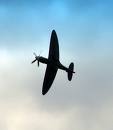Modeling a wing mast sail in heliciel
Introducing the mecaflux software suite:
Wings or foils modeling in heliciel
Aerial propeller modeling in heliciel
Boat propeller modeling in heliciel
Ventilation propeller modeling in heliciel
Wind turbine propeller modeling in heliciel
Tidal turbine modeling in heliciel
Kaplan propeller modeling in heliciel
wing or blade tip Losses
Understand and master the Aerodynamics Hydrodynamics wing or blade tip Losses:
The length of the blade or wing:
The third dimension of leaks:
the losses at the blade tip ..

It is important to remember that the formulas of drag and lift force, provide theoretical values, not taking into account some losses. These Drag and Lift, measured in the wind tunnel or calculated by numerical methods are called performance 2D (two-dimensional) or "wing of infinite span performance." 2D, because it does not take into account the phenomena of the third dimension: the length of the blade or wing. The lift is the result of the pressure difference between the top and bottom of the wing.
But the more the pressure difference is important. more leaks are important because the more fluid want to get to the other side by the shortest path it finds! The shortest path is the wingtip.


So:
- More the lift is near the wing tip, the greater are the leaks.
- More shorter is the blade or wing , greater are the leaks.
- An ideal blade without leaks would have a yield equal to the performance of its 2D profiles
See: tip loss factor expressed by Prandtl :, this factor is integrated into the blade element theory and Heliciel software incorporates this factor in the calculation of the propellers..
The apect ratio helps us to assess the losses to wingtip:
- for a rectangular wing:
aspect ratio = Span(lwing length)/ Chord(width of the wing):
- A formula valid for all forms uses the wing surface and the span:
Aspect ratio( all forms)= wing length/(wing area)²
Example of the impact of the shape and the aspect ratio vortex and losses wingtip 4 wings of shapes and different aspect ratio, shown schematically in the software Heliciel
Rectangular wing length of 2 meters Aspect ratio = 4 ratio (Lift / Drag) =16 |
Rectangular wing length of 9 meters Aspect ratio = 18 ratio (Lift / Drag) =32 |
| Triangular wing length of 2 meters. Aspect ratio = 5 ratio (Lift / Drag) =19. | Triangular wing length of 9 meters. Aspect ratio = 33 ratio (Lift / Drag) =36 |
A high aspect ratio, it is a lift distributed over a large area. So a pressure difference between the lower and upper surfaces not giving too fluid the desire to get to the other side. If the lift is distributed as far as possible the tip of the wing that will make more road to get to the other side, and this will limit leakage. The wing shape theoretically distributed lift farthest from the end, that is the ellipse. Some aircraft therefore quite simply adopted elliptical wings.

- Another device reduces leakage blade tip by placing a barrier: The winglet.

 Global site map
Global site map Mecaflux
Mecaflux Tutorials Mecaflux Pro3D
Tutorials Mecaflux Pro3D Tutorials Heliciel
Tutorials Heliciel Mecaflux Store
Mecaflux Store Compare software functions
Compare software functions Quotes, Orders, Payment Methods
Quotes, Orders, Payment Methods project technical studies
project technical studies